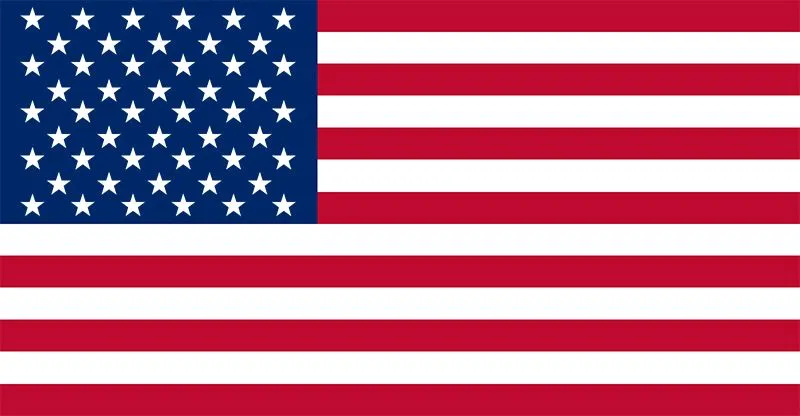
Made in America
Get Connected With



Email Us
sale@abrvpartsacc.com
Call Us
+1 (626) 448-2100
Made in America
Get Connected With




In modern plumbing systems, the role of pipe fittings is often underestimated, yet these components are crucial for maintaining the efficiency and reliability of water distribution networks. According to a report by the Plumbing and Mechanical Manufacturers Association (PMMA), pipe fittings account for approximately 40% of all plumbing product sales, highlighting their significance in the industry.
 These fittings, which include elbows, tees, couplings, and reducers, serve to connect various pipes and redirect water flow within a system. As the demand for sustainable and efficient plumbing solutions grows, understanding the essential characteristics and functionalities of pipe fittings becomes increasingly important. With advancements in materials and technologies, the performance and durability of these fittings continue to evolve, ultimately impacting the overall effectiveness of plumbing installations in commercial and residential settings alike.
These fittings, which include elbows, tees, couplings, and reducers, serve to connect various pipes and redirect water flow within a system. As the demand for sustainable and efficient plumbing solutions grows, understanding the essential characteristics and functionalities of pipe fittings becomes increasingly important. With advancements in materials and technologies, the performance and durability of these fittings continue to evolve, ultimately impacting the overall effectiveness of plumbing installations in commercial and residential settings alike.
In modern plumbing systems, the significance of pipe fittings cannot be overstated. They play a crucial role in ensuring the seamless operation of piping infrastructure, allowing for proper flow and distribution of water. According to a report by the International Plumbing and Mechanical Officials (IPMO), nearly 70% of plumbing failures can be traced back to improper fitting installations or material choices. This statistic underscores the importance of selecting high-quality fittings designed for durability and compatibility with various pipe materials.
Furthermore, pipe fittings contribute to the overall efficiency of plumbing systems. The Plumbing Efficiency Research Coalition (PERC) found that systems utilizing upgraded fittings and fixtures can reduce water wastage by up to 30%. With increasing concerns over water conservation and the rising utility costs, investing in reliable pipe fittings is not just a matter of compliance but a strategic decision for sustainability. By ensuring that each connection is secure and leak-free, plumbing professionals can help homeowners and businesses achieve long-term savings while promoting environmental stewardship.

Pipe fittings play a crucial role in modern plumbing systems, facilitating the efficient movement of water and other fluids. The most common types of pipe fittings include elbows, tees, reducers, couplings, and caps, each serving distinct functions that contribute to the overall performance of plumbing networks. Elbows allow for directional changes in piping, providing flexibility to navigate around obstacles. Tees enable the branching of pipes, effectively creating additional pathways for fluid flow without disrupting the main line.
Reducers are essential when transitioning between different pipe diameters, ensuring a seamless connection that maintains pressure and flow rate. Couplings are used to connect two sections of pipe, facilitating repairs or extensions of existing systems. Caps serve to seal the end of a pipe, preventing unwanted leakage or contamination when a line is not in use. Understanding the specific functions of these fittings aids in designing efficient and reliable plumbing systems that meet the diverse needs of modern infrastructure.
| Type of Pipe Fitting | Primary Function | Common Materials | Typical Applications |
|---|---|---|---|
| Elbow | Change direction of flow | PVC, Copper, Steel | Residential plumbing, HVAC systems |
| Tee | Connect three pipes | PVC, Copper, Galvanized Steel | Water supply systems, drainage |
| Coupling | Connect two pipes of the same diameter | PVC, Copper, Brass | Repairing broken pipes, extending pipe lines |
| Cap | Seal the end of a pipe | PVC, Copper, Steel | Piping systems that require closed ends |
| Reducer | Connect pipes of different diameters | PVC, Steel, Copper | Adaptation in plumbing systems, fire sprinkler systems |
When it comes to modern plumbing systems, the choice of materials for pipe fittings plays a pivotal role in ensuring efficiency and longevity. Common materials include PVC, copper, and stainless steel, each possessing distinct strengths and weaknesses. According to a recent report by the American Society of Plumbing Engineers (ASPE), PVC remains a leading choice in residential plumbing due to its low cost, corrosion resistance, and lightweight nature. However, it also has limitations, such as a lower tensile strength compared to metal fittings and limited high-temperature tolerance, which can lead to potential fragility in certain applications.
On the other hand, copper fittings are widely regarded for their durability and reliability, especially in high-pressure systems. They can withstand extreme temperatures and are less prone to degradation over time. However, the cost of copper can be a disadvantage; ASPE reports that the price of copper fittings has increased by over 30% in the past five years due to fluctuating market demands. Stainless steel fittings offer a robust alternative with excellent resistance to corrosion and high strength, making them ideal for both residential and commercial settings. Nonetheless, their higher initial cost can be a barrier for some projects, balancing initial investment against long-term performance.
Proper installation techniques for pipe fittings are crucial to ensuring the efficiency and longevity of modern plumbing systems. According to the American Society of Plumbing Engineers (ASPE), approximately 30% of plumbing failures are due to improper installation and fitting choices. Ensuring proper alignment and securing fittings with the appropriate tools can significantly reduce the risk of leaks and system failures. A study published in the Journal of Building Performance indicates that up to 50% of plumbing-related issues can be traced back to inadequate fitting techniques.

When it comes to best practices, it is essential to adhere to manufacturer guidelines and industry standards. For instance, using the correct type of adhesive, fittings, and ensuring proper torque specifications can prevent complications down the line. The National Association of Plumbing Contractors (NAPC) emphasizes the importance of training and certification for plumbers, as properly trained professionals are less likely to make installation errors that could lead to costly repairs. Furthermore, implementing regular inspections and maintenance can help identify and mitigate potential issues with pipe fittings before they escalate into major problems.
In modern plumbing systems, pipe fittings play a crucial role in ensuring seamless connectivity and functionality. However, various issues can arise, leading to significant challenges in infrastructure maintenance. For instance, the South African plastic pipe industry is facing risks from poor installation practices and substandard products, which jeopardize the integrity of the infrastructure. Studies have shown that improper fitting connections can lead to leaks and system failures, contributing to an estimated loss of nearly 1 trillion gallons of water annually in household systems alone.
Another prominent issue is water hammer, a phenomenon resulting from the rapid operation of valves or pumps. This can cause pipes to rattle and even burst if not properly managed. Recent experimental studies demonstrate that the choice of pipe material significantly influences the occurrence and severity of water hammer, spotlighting the importance of selecting appropriate fittings for different systems. Additionally, corrosion remains a pervasive problem, with research indicating that corroded pipe interiors can lead to reduced flow efficiency and increased maintenance costs. Implementing effective solutions, such as high-quality fittings and regular inspections, can mitigate these issues and enhance the longevity and performance of plumbing systems.





